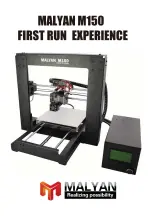
5–15
RS–232 and RS–422 Serial Interfaces
The RS–232 and RS–422 serial interface circuit characteristics are compat-
ible with the Electronic Industry Association Specifications EIA–232–D and
EIA–422–A.
The RS–232 and RS–422 serial interfaces enable the printer to operate with
bit serial devices that are compatible with an RS–232 controller. The input
serial data transfer rate (in baud) is selectable from the printer’s operator
panel. Baud rates of 1200, 2400, 4800, 9600, and 19,200 are available for
RS–232. If you have the RS–422 interface, 1200, 2400, 4800, 9600, 19200,
38400, 57600, and 115K baud rates are available.
The input format consists of a single start bit, 7 or 8 data bits, and one or two
stop bits. The number of data bits is determined by printer configuration. The
data bits are interpreted with the least significant bit first. Parity checking is
determined by printer configuration options selected from the operator panel.
The printer interface uses a first-in/first-out buffer. The asynchronous
interface accepts data as it is provided by the host. The length of the data
cable from the host computer to the printer must not exceed 50 feet
(15 meters) for RS–232, or 4000 feet (1220 meters) for RS–422.
Table 5–2. RS–232 Serial Interface Connector Pin Assignments
Input Signals
Output Signals
Miscellaneous
Signal
Pin
Signal
Pin
Signal
Pin
Receive Data (RD)
3
Transmit Data (TD)
2
Chassis Ground
1
Clear To Send (CTS)
5
Request To Send (RTS)
4
Signal Ground
7
Data Set Ready (DSR)
6
Data Terminal Ready (DTR) 20
Data Carrier Detect (DCD) 8
Table 5–3. RS–422 Serial Interface Connector Pin Assignments
Input Signals
Output Signals
Miscellaneous
Signal
Pin
Signal
Pin
Signal
Pin
– Receive Data (RD)
15
– Transmit Data (TD)
19
Chassis Ground
1
+ Receive Data
17
+ Transmit Data (TD)
25
Signal Ground
7
Summary of Contents for LGplus Series
Page 4: ......
Page 22: ...1 12...
Page 48: ...2 26...
Page 162: ...6 18...
Page 172: ...B 2...
Page 184: ...Glossary 12...
















































